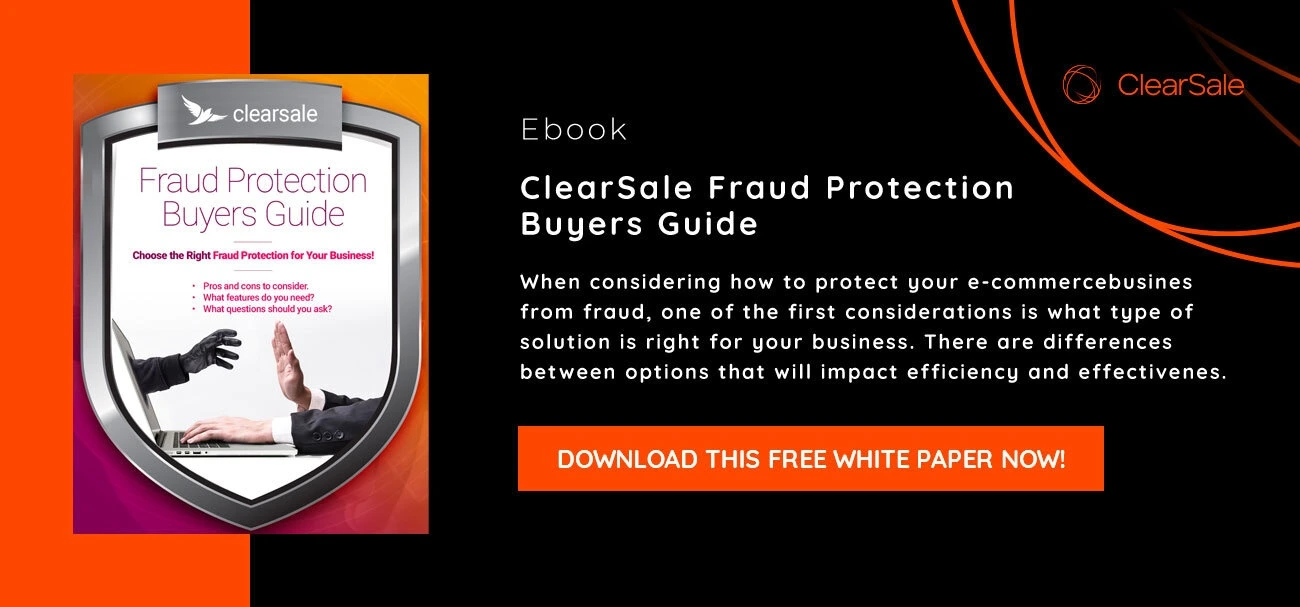How Backtesting Can Improve Fraud Prevention
They say hindsight is 20/20, and that’s especially true for e-commerce merchants looking to increase their approval rates and decrease fraudulent transactions. It’s easy to look back at transactions that were obviously fraudulent and think, “Why didn’t my fraud prevention solution catch this?”
But why wait until you’re suffering at the hands of fraudsters to make adjustments to your fraud prevention solution? If there were a way to proactively test your solution to help ensure it’s flagging potentially fraudulent transactions, wouldn’t you try it? Backtesting may be one approach that can help.
The Benefit of Backtesting
If history does indeed repeat itself, then one way you can test your fraud prevention solution is by resubmitting past transactions that you know to be fraudulent. If your system approves them again, you know you’ve got some improvements to make.
Here are two reasons why you might consider running backtesting on your fraud prevention solution.
1. Lets You Test New Products
If your product is brand new or unique, there’s no track record for knowing how your fraud prevention solution will treat the product. When the product first launches, your AI-based fraud solution will lack the right data for making accurate approval decisions. If you don’t perform testing first, your solution may end up declining orders that are good and becoming more conservative over time — resulting in more and more future orders being rejected.
To make sure your fraud prevention solution is prepared for a new product launch, consider testing your system with some sample purchases of these new products to ensure your system doesn’t flag or block them or by testing similar products that already exist in your inventory. Once you do launch the new products, flexibility will be key to maximizing sales and minimizing false declines and chargebacks. This may require turning off (or loosening) the standards for your AI solution while you closely monitor actual sales and fraud trends, study your potential risk, and modify your fraud strategy based on the data.
2. Helps With Monitoring Fraud Filters
Many e-commerce merchants, especially smaller ones, will use simple fraud filters to evaluate incoming transactions and approve them, flag them for review, or autodecline them. But issues can arise if the filters aren’t set up correctly. You might think that if one fraud filter catches some fraud, more fraud filters will detect even more. That approach doesn’t always work. Layering filters incorrectly can result in some rules canceling others out, leaving you as vulnerable as if you had no fraud protection at all.
Smart fraudsters know how to “game” fraud filters. For example, a fraudster might test your system with a series of orders and eventually learn that you’ll typically automatically approve orders valued at less than $1,000, while orders above that are typically reviewed. Once they learn this, they’ll flood your system with batches of orders of $999 that enable them to fly under the radar.
So beat them at their own game. Backtest your system using old orders that you know were fraudulent — and some that are good. Can your system correctly identify them? If your system doesn’t accurately evaluate those transactions, then you know it’s time to adjust your fraud filters — either reordering them or eliminating some completely.
Upgrading Your Fraud Prevention Approach
While backtesting may help you understand whether your fraud prevention solution will work as you expect it to, it’s not the only use for this tactic.
With so many fraud prevention options available to you, it’s hard to know which is the right one to meet your business’s needs. Fortunately, backtesting can also be a great way to help you choose service providers.
Typically, when evaluating fraud prevention service providers, savvy merchants will look at pricing, potential ROI, customer reviews, and how well the provider can meet the merchant’s needs. But sometimes even that amount of due diligence is not enough. That’s where backtests and trials can make all the difference.
To do this, merchants can send providers a database of transactions with no fraud identification, requesting their decision for each transaction. If they decline legitimate orders that the merchant had approved, that may be a red flag indicating that the provider uses fraud filters that are too strict, which can increase the risk of false declines.
Going even farther, merchants can request a trial, asking for real decisions on live transactions, typically done via an API integration. This is a more complex process requiring a bit more in the way of resources, but if available, it’s the definitive way to test providers. There are a couple of ways in which these tests can be conducted, but it’s vital that the testing be fair and that the provider has the same level of information as the merchant does:
- In parallel testing, the merchant can randomly route orders to two competing providers and monitor the results.
- In a series test, providers will take turns handling fraud prevention for a fixed period of time. Approval rates can be measured during the test period.
Note that in either test, merchants should wait 30 days afterward to see what the chargeback rates are for each provider’s approved transactions.
Want to learn more? Check out our free “Fraud Protection Buyer’s Guide.” It explores many of the different solutions available and the pros and cons of each that affect efficiency and effectiveness, like usability, integration, and chargebacks. There’s even a built-in checklist so that you can ask the right questions when comparing fraud protection solutions. Download your copy today, and start ensuring that your fraud prevention solution is working for, not against, you.
 Rafael Lourenco
Rafael Lourenco

